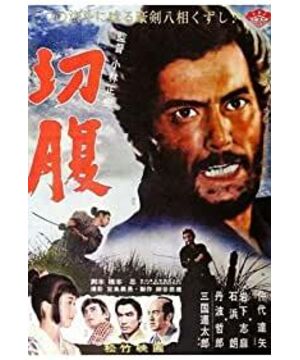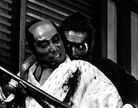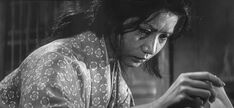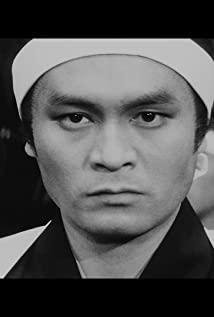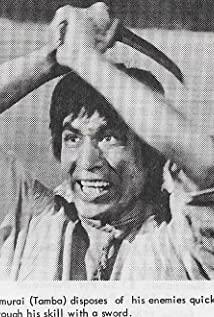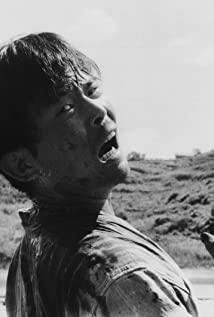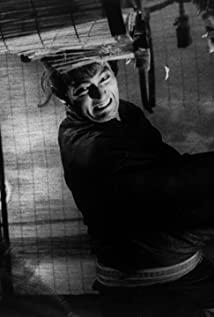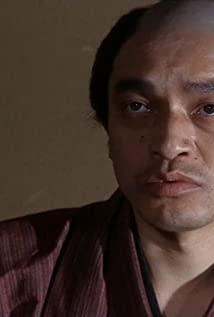If "Once Upon a Time in the West" is the tragedy of the West and the cowboys, "Cutting the Belly" is the funeral of Bushido and Katana.
Like other traditional Japanese culture, Japanese folk music also retains a large number of elements from ancient Chinese Tang Dynasty music: Xiao and Shakuhachi, Sanxian and Sanweixian, Tang Shisanxian Zheng and Le Zheng. The most intense music in the whole film is at the beginning of the film. Apart from a few shakuhachi and cymbals, the sound of shamisen is endless. Due to the different sounding principles, compared to the breath-controlled pipe music, the string-controlled string music can generate a sense of urgency and tension in a shorter time. Because the biggest feature of the former is the stretching feeling brought by the breath, while the biggest feature of the latter is the tearing feeling brought by the strings. "There is the sound of gold and iron, and many soldiers."
"Cutting the Abdomen" is very stingy in the use of "sound", both in music and in sound, adhering to an extremely concise style. In addition to the music that appears in the opening and other important joints, the most interesting thing is the folding fan of the young master Jing Yi's family, which opens or closes like a gavel in the hands of a storyteller. What's more interesting is that the whole film revolves around the story of the same person in the two populations.
first story was told to the samurai by the princes: a samurai carrying a bamboo sword came to the prince’s residence and "blackmailed" money in the name of cutting his belly. The princes let the flow go and forced the samurai to cut his belly with a bamboo knife. An image of a humble and shameless warrior is established.
The second story was told by the samurai to the princes: how did the samurai become a ronin, how to survive with a girl, how to see new hope (the birth of the third generation of family members), and how this hope became despair. The image of the samurai established in the first story was not broken, but was made up for, enriched and transformed into the character image in an instant.
At the same time, the spiritual world of the protagonist is transformed. Name, loyalty, bravery, righteousness, courtesy, honesty, gram, and benevolence are the eight most important characters of Japanese Bushido. These eight characters are in order, and their importance decreases from front to back. The lord committed suicide, and the samurai became a ronin and lost his name. Banshiro wanted to commit suicide with the lord before, but was prevented by the lord, but he failed his close friends and the lord’s trust, and "killed" his best friend because of his own cowardice. The child has lost loyalty, courage, and righteousness. Name, loyalty, courage, and righteousness are all lost, and courtesy, sincerity, graciousness, and benevolence naturally no longer exist.
To Banshiro, Kingo is the hope of a new life; to Hanshiro, seeking a girl is the sustenance of the old samurai spirit. Lost the past, and no future. The old samurai's three views, formed by Hanshiro since birth, collapsed, instead of a pure desire. A desire for revenge and catharsis. At the same time, he also got a sober and thorough: "Samurai is also human, but also flesh and blood", "My today is your tomorrow". The samurai gradually declined, how long can the higher princes persist?
Most of the action fighting scenes in the film are concentrated in the back, and the fighting scenes appear at the same time as a gust of wind. If a person does not move, the wind does not move, and if a person moves, the wind blows up. Especially with the duel between Banshiro and Hikokuro as the climax, the two set off from Banshiro's house, passed the cemetery and bamboo forest, and reached a grassy hillside. Similar scenes have also appeared in "Zizan Shiro", but compared to the former, the wind blows up and the clouds are so happy, the latter's wind is more tragic and sad. The two sabers can tear through the wind, but they cut the fate of constant death.
end, Hanshiro rushed into the inner hall of Ii’s house by accident, and saw the armor and weapons enshrined here (if it's not wrong, it should be Naomasa Ii, known as the Akagi). The exhausted Banshiro raised the highest symbol of the samurai spirit: the armor of the ancestors, and threw it out.
What's interesting is that, just like the cause of death of the four samurai in "Seven Samurai", Banshiro also died under the gun after all. In Japanese history, the samurai class was finally buried with the musket.
At the end, the blood of the samurai was swept away, and the sword and hair bun were discarded. All that is left is the armor and the "eternal prosperity" that no one believes.
The general has a hundred battles.
Xiang Heliang, looking back thousands of miles, the old man will never end.
Yi Shui Xiaoxiao was cold in the west, and his clothes were covered with snow.
View more about Hara-Kiri reviews


